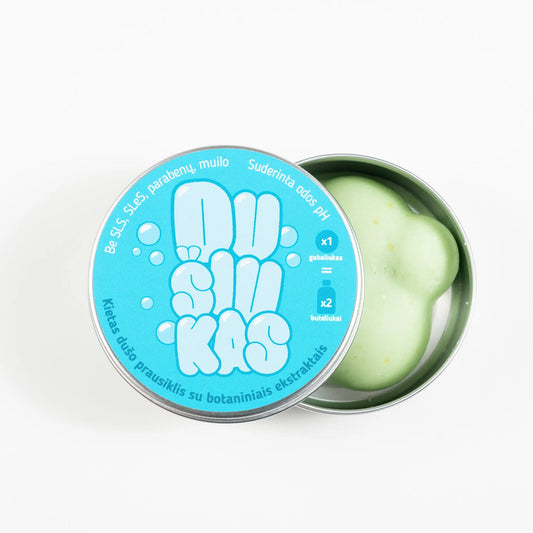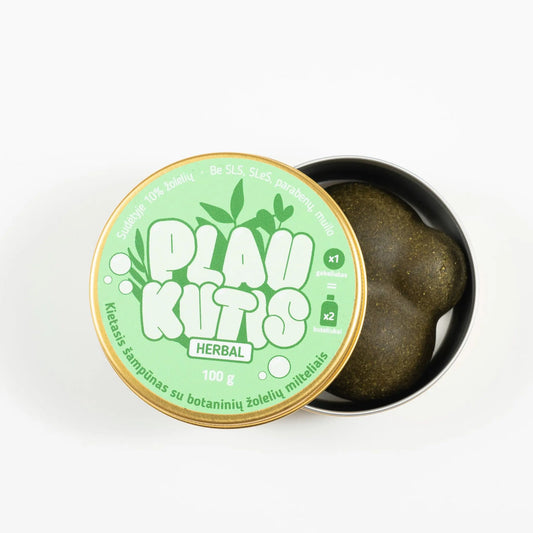Time Capsules: The Evolution of Solid Perfumes Through the Ages as a Reflection of Historical Periods

The Connection Between Scents and Cultural Symbols
Scents, both as part of everyday experience and as a reflection of cultural symbols, have a profound impact on our lives and culture. Their connection with social norms and cultural symbols is complex and multifaceted. Different scents not only reflect, but also shape social statuses and cultural values.
Scents and perfumes have an important place in cultural space and often reflect historical and social contexts. They can become symbols of social status and prestige, revealing both personal and cultural values. In Eastern cultures, such as Ancient Persia and India, the use of scents had deep traditions and was associated with various cultural and social norms.

In ancient Persia, perfumes were highly valued and used as signs of luxury and high social status. The most popular scents were made from expensive ingredients such as musk, frankincense, rose oil, and saffron. Incenses, such as juniper and frankincense resins, were used in both religious rituals and everyday life. Frankincense was considered sacred and was often burned in temples and palaces, while musk was used as a base for luxurious perfumes, often mixed with rose and sandalwood oils. Persian perfumes were complex, containing many fragrant layers, and their production required high skill and special technology.

In ancient Egypt, scents and perfumes had a special significance in religion and culture. The Egyptians used various types of incense, such as myrrh, frankincense, and oils from aromatic plants such as mint and cinnamon. These scents were used not only in everyday life, but also in religious ceremonies, where they symbolized holiness and honored the gods. Incense was an important part of temples and tombs, and its aromas were associated with divine and protective rituals. Fragrant oils were also used in the mummification process and in funeral ceremonies.

In 18th-century France, fragrances became an important aspect of the lives of the aristocracy and high society. At the time, perfumes were symbolized as signs of luxury and social status, and their production was extremely complex and expensive. The most popular perfumes were made from ingredients such as civet, sandalwood, and various floral extracts such as rose and jasmine oils. The French aristocracy particularly valued perfumes, which were used both in everyday life and at formal events. The production and consumption of perfumes were refined and more focused on fashion trends, exceptional elegance, and prestige. In this way, scents became not only a symbol of aesthetic expression, but also a symbol of social status.
Today, the choice and use of fragrances remains an important aspect of culture and social norms. Expensive perfumes are often associated with the luxury and high fashion industries, and scents and their use can reflect both personal tastes and social status.
The Function of Scents as “Time Capsules”
Solid perfumes, like other fragrance formats, can act as “time capsules” that provide valuable information about past civilizations and their technologies. These perfumes, made from natural ingredients, often persist for long periods of time, and their composition and scent reveal important aspects about trade routes, technological advances, and daily life in the past.

Ancient Egyptian perfumes were often made from exotic and expensive natural ingredients that were imported from distant lands. For example, the ancient Egyptians used frankincense (frankincense) and myrrh, which were obtained from the resins of specific trees—the frankincense tree (Boswellia sacra) and the myrrh bush (Commiphora wightii). In addition, fragrant trees and plants such as sandalwood (Santalum album) and cinnamon (Cinnamomum verum) were used, which provided deep and warm aromas. The Egyptians also used fragrant oils extracted from roses (Rosa damascena) and jasmine (Jasminum grandiflorum), which were added to solid perfumes to provide a subtle and long-lasting scent. These ingredients reveal not only the composition of the perfumes, but also ancient trade routes, as these materials were transported from distant regions such as India and Arabia.

The ancient Romans also had advanced techniques for making solid perfumes. They used oils and resins from various trees and plants, such as civet (Civettictis civetta) - a musk obtained from the glands of civets, which was valued for its intense and long-lasting scent. The Romans also used solid perfumes from flower extracts, such as rose oil, and resins from trees, such as boronia (Commiphora africana).

In ancient India and Persia , perfumes were also made from expensive and exotic ingredients. The Indians used sandalwood oil, which was obtained from the sandalwood tree (Santalum album), and saffron (Crocus sativus), another golden ingredient that gave the scent a deep and luxurious hue. Persian perfumes were composed of various aromatic resins and oils, such as rose oil and musk, often mixed with exotic spices such as cinnamon and cardamom.
These solid perfumes, made from natural ingredients, allow modern researchers to trace historical trade routes, understand technological advances, and gain insight into aspects of the daily lives of past people. They bear witness to the cultural customs and technologies of ancient people that were important to their social and religious lives. The composition of perfumes and their use provide unique insights into past civilizations and their relationships with the world around them.
The Connections Between Smells and Archaeological Findings
Archaeologists often use scent analysis techniques to better understand ancient civilizations and their ways of life. Incense remains found in archaeological excavations provide valuable information about the daily lives, religious practices, and social norms of past people. Studies of these remains reveal not only how often and on what occasions incense was used, but also what types were valued in certain cultures.
Research into ancient Egypt suggests that incense was an important part of religious and everyday ceremonies. Remains of incense found in Egyptian temples and tombs often reveal the use of a variety of aromatic substances, including frankincense (Boswellia sacra) and myrrh (Commiphora wightii). Frankincense was often used in religious rituals, such as prayers and offerings, as well as in funeral ceremonies, where it symbolized spiritual purity and honor. Myrrh, with its pungent and warm scent, was often used in conjunction with frankincense. Incense was burned in temples and tombs, as well as as part of everyday life in the home. Egyptian incense was often imported from distant lands such as India and Arabia, and its use is evidence of ancient trade relations and social hierarchy.
Archaeological finds from ancient Greece reveal that incense was important in both everyday and ceremonial activities. The most popular incenses were made from aromatic resins and plants, such as mastic (Pistacia lentiscus) and juniper resin (Juniperus communis). Mastic, obtained from the mastic tree, was valued for its sweet and fresh scent, and was often used in religious rituals and medicinal preparations. Juniper resin had a smoky and distinctive odor, and was used as incense in temples and various ceremonies. Incense was burned not only in temples, but also in homes, and its use was often associated with public events and celebrations.

In Roman times, incense and perfumes were also of great importance. The Romans used various resins and aromatic substances, such as civet (Civettictis civetta) and rose oil. Civet, extracted from the glands of civets, was used as the main fragrance ingredient due to its intense and long-lasting scent. Rose oil was very popular due to its delicate and luxurious aroma. These substances were often used not only in everyday life, but also in special ceremonies and public events. Archaeologists from the Roman period find remains of aromatic substances in various excavation sites, such as the basements of ancient villas and public buildings, which indicates that fragrant substances were used wherever public and private ceremonies took place.
These archaeological finds provide important insights into the use of incense in the past, showing how often and on what occasions these substances were used, and revealing aspects of trade, social norms, and technology associated with the production and consumption of scents in antiquity.

The Role of Solid Perfumes in World Cultures Today
Today, solid perfumes serve a variety of functions and have different meanings in different cultures, from traditional rituals to aspects of aesthetics and fashion. Each culture adapts solid perfumes to its specific needs and values.

In Japan, incense, known as kōdō (香道), is an important traditional practice with roots dating back to ancient times. Kōdō, or "the path of perfume", is the ritualized art of using incense, which involves not only creating scents but also appreciating them as an aesthetic and spiritual experience. These incenses are often used in ceremonies such as tea ceremonies or festive events, and have symbolic meaning, representing peace, harmony, and inner balance. In traditional Japanese rituals, incense can be burned in various pots or used in incense stick formats, which consist of crushed aromatic materials such as sandalwood (Santalum album) and agarwood (Aquilaria malaccensis). The scent and manner of use of these incenses often reflect a spiritual journey and aesthetics.

In India and Persia , perfumes also have a deep tradition. For example, perfumes used in India are often made from incense, which represents various religions and rituals. Indian perfumes, called "ittar", are extracts of natural fragrances such as rose, jasmine and sandalwood, which are often used for both personal hygiene and religious rituals.

In the Western world, solid perfumes are often more associated with aesthetics and fashion. Contemporary perfumes are often modern, trendy fragrance compositions that combine a variety of ingredients, such as citrus, florals, and spices. For example, brands such as L'Occitane en Provence and Diptyque offer solid perfumes that can be used as symbols of luxury and prestige. These perfumes are often presented in elegant containers that reflect contemporary cultural trends and aesthetics.
Modern solid perfumes, such as Byredo and Le Labo , emphasize individuality and style. These perfumes are often tailored to different occasions and moods, allowing people to express their personal style and lifestyle. For example, Byredo offers solid perfumes that are unique and subtle, often used as an additional style detail. Le Labo perfumes, such as Santal 33, are famous for their characteristic scent, which becomes a personal and easily recognizable mark.
These solid perfumes are not only aesthetic products, but also a reflection of cultural values and social norms. While in some cultures they retain their traditional meaning and use, in others they adapt to modern standards of fashion and prestige, revealing diverse cultural meanings and functions.
Conclusions
Scents and their connection to cultural symbols and social norms are a complex and multifaceted phenomenon that can reveal valuable insights into past civilizations and modern cultures. Solid perfumes, as “time capsules,” provide valuable information about past technologies, social relationships, and cultural customs. Archaeological analysis of scents reveals details about ancient life and technology, while contemporary perfumes reflect contemporary fashions, aesthetics, and social statuses. Scents, through their history and cultural contexts, remain an important aspect of human life and culture, providing an opportunity to gain a deeper understanding of both the past and the present.












